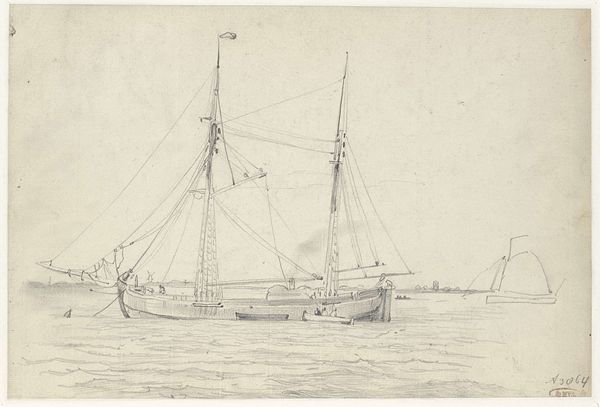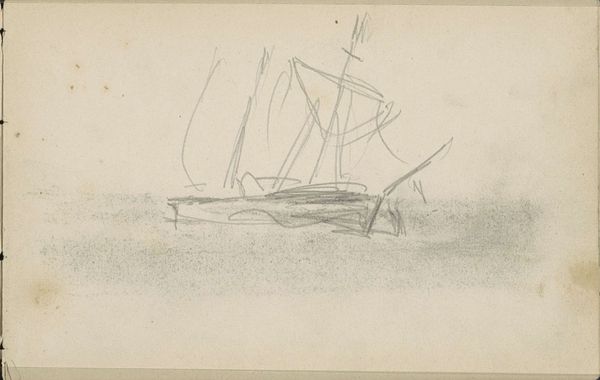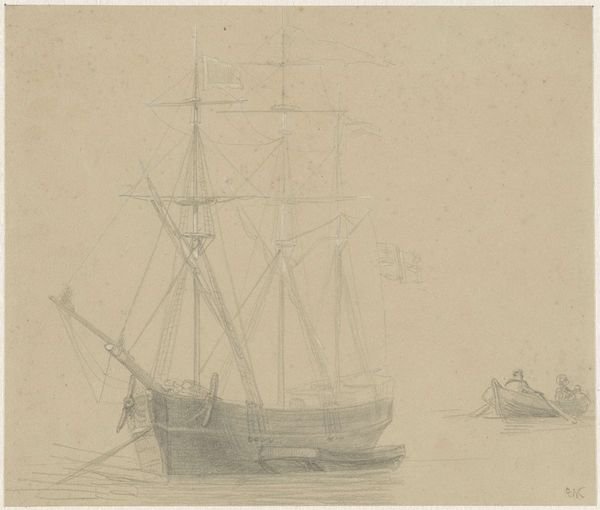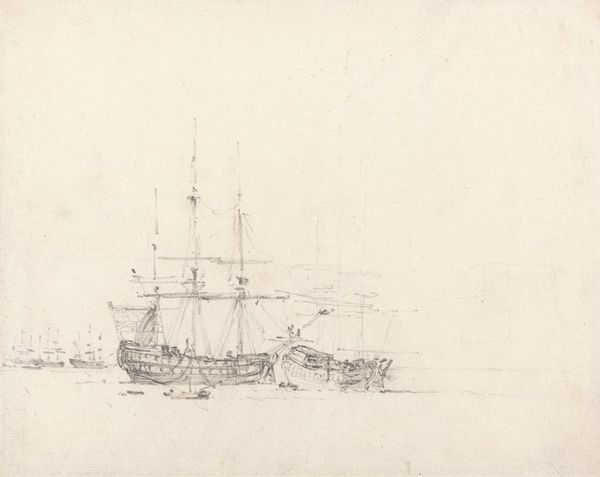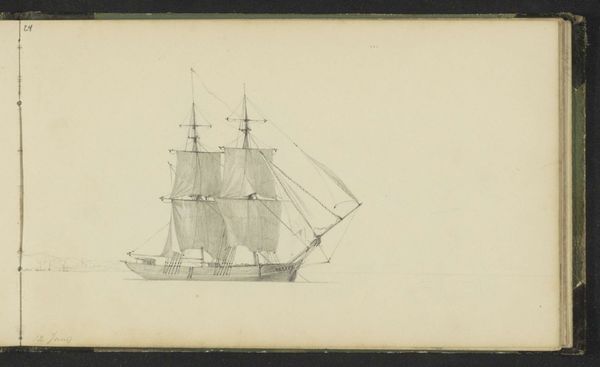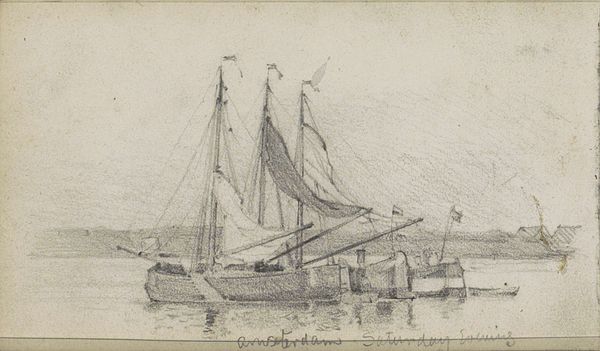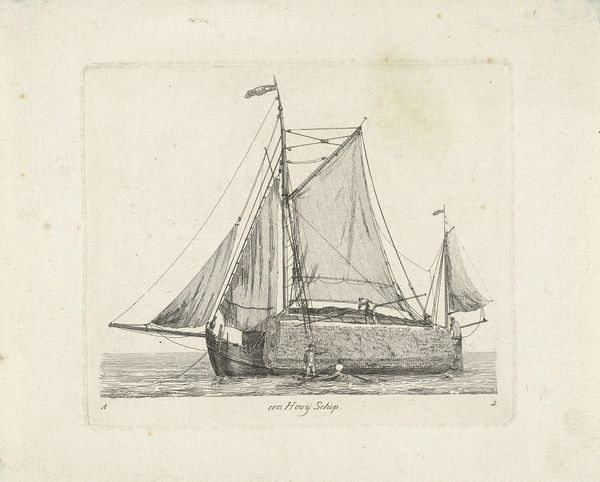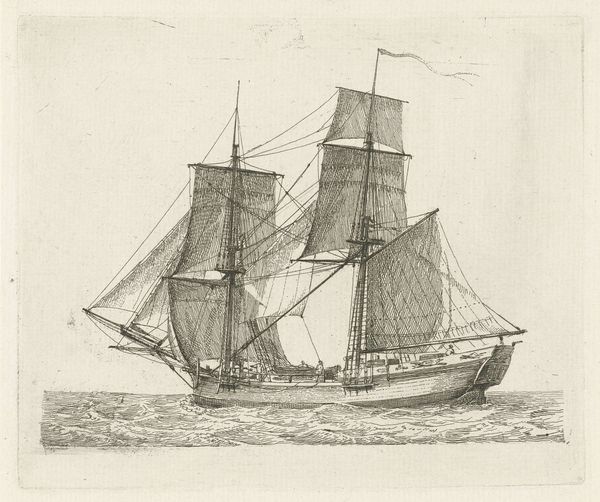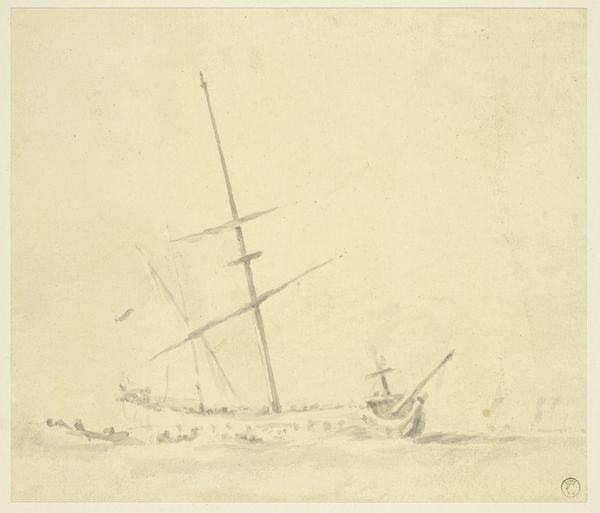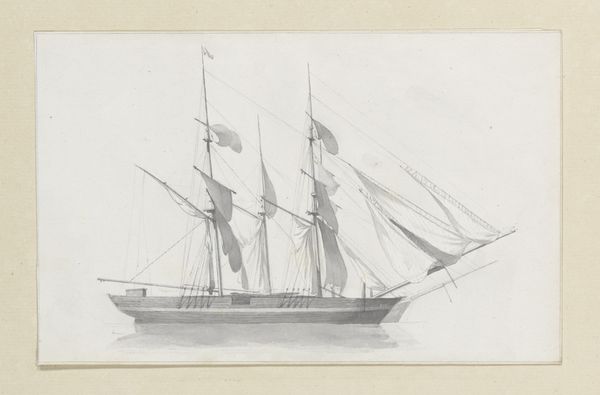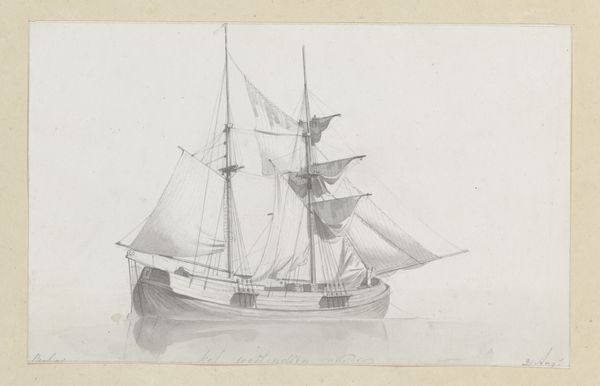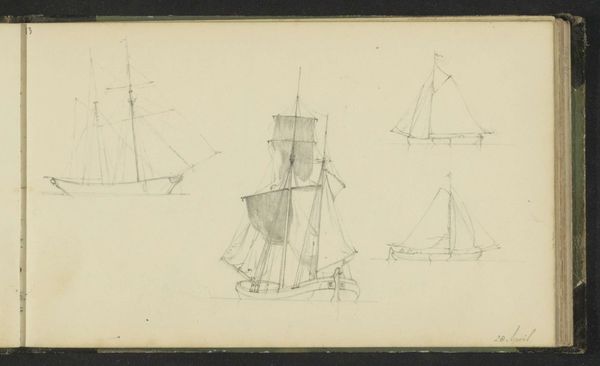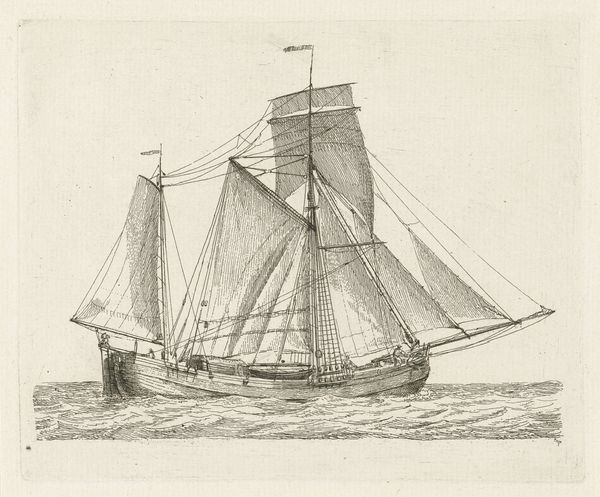
drawing, paper, pencil
#
drawing
#
impressionism
#
pencil sketch
#
landscape
#
paper
#
pencil
#
sketchbook drawing
#
realism
Copyright: Rijks Museum: Open Domain
Curator: Welcome to the Rijksmuseum. We are standing before Louis Apol's "Schepen op de Barentszzee nabij Vardø," a drawing made with pencil on paper, possibly between 1880 and 1887. Editor: A quiet stillness permeates this sketch. The ghostly ship seems to hang in a haze of atmosphere. It's quite ethereal, almost dreamlike. Curator: It’s interesting you use that word, ‘ethereal.’ Apol was very deliberate in his approach. As a Realist, he sought to accurately represent the world, particularly the landscapes and working conditions of ordinary people. This was not just artistic preference; it also speaks to a social commentary. Editor: So, what symbolism might be embedded in these ships near Vardø? Given the location's challenging climate and the nature of maritime activity, does it tell a story of human endeavor against a harsh landscape? Curator: Indeed. Ships have, for centuries, been symbols of exploration, trade, and the reach of human ambition, but equally of fragility and the constant negotiation with the elements. Apol’s choice to render the scene in pencil adds to that sense of fragility. The subtle gradations create depth but also evoke impermanence. What we're seeing is a working vessel, its purpose likely linked to fishing or trade. Editor: You are correct about the sense of fragility. Considering the paper itself as a material, it underscores the work’s delicacy. The pencil marks trace lines, and hatchings almost breathe. One considers the artist and their immediate circumstances of artistic labor... Were these sketches done on location to capture atmosphere? Or carefully constructed studies within the artist's atelier? Curator: Both questions point towards an important element about Apol’s process. These were most probably preliminary drawings created during his Arctic expeditions, studies used later for larger paintings done in the studio. This one might’ve captured specific light and atmospheric conditions that appealed to him, a quick impression caught on the fly. Editor: It feels more immediate knowing that! It casts the finished paintings into another light – less documents, more constructed and materialized sensations of fleeting time. Curator: Absolutely, considering Apol's commitment to the visible realities of his age. This drawing prompts us to question how he engaged with modernity, through landscape and its inhabitants and in which way. Editor: Considering his choices of technique, material and subjects, he created art to show the material conditions of both artist and subject! Thank you; my perspective has greatly changed.
Comments
No comments
Be the first to comment and join the conversation on the ultimate creative platform.
